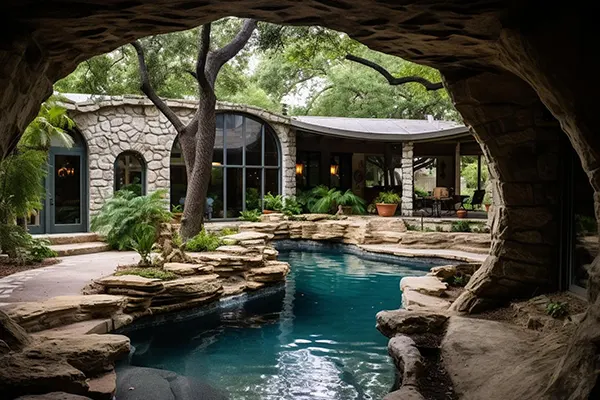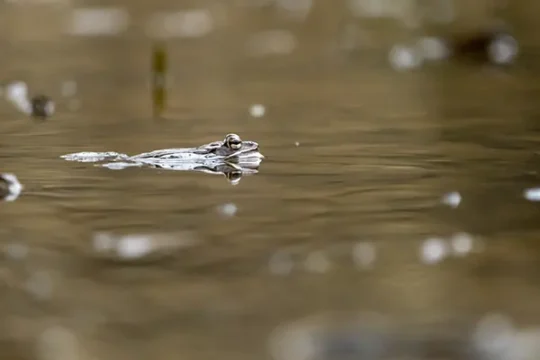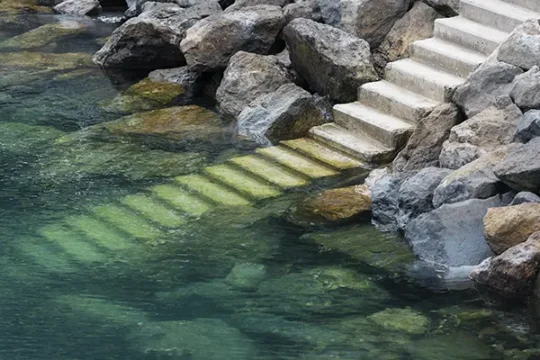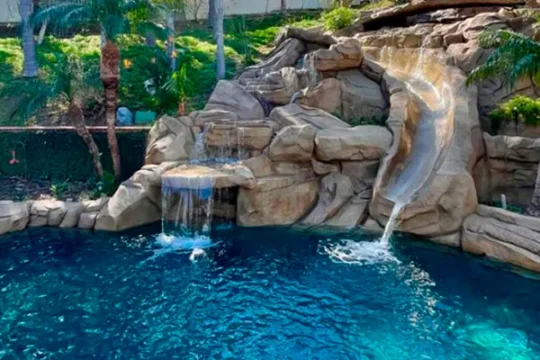TABLE OF CONTENTS
That gorgeous rock pool with waterfalls and maybe a slide looks amazing. Then the first electric bill arrives and suddenly it feels like a mistake. The good news? Homeowners don’t have to choose between enjoying their pool and keeping electricity costs reasonable.
Many Orange County pool owners have cut their energy bills in half—sometimes more—without spending a fortune or losing features they love. Most rock pools run way less efficiently than they could. The fixes are usually pretty straightforward. Some cost nothing—just time and smarter habits. Others require upfront investment but pay for themselves faster than expected.
This guide covers what actually works for making rock pools more energy efficient without breaking the bank.
Understanding Your Rock Pool’s Energy Consumption
Before spending money on solutions, figure out where the money actually goes. Most pool owners are shocked when they see the breakdown.
Pumps are almost always the biggest energy consumers—about 80% of total pool energy use. That’s the main culprit. Artificial rock features like waterfalls or grottos have add-on pumps pulling their own weight too. They need extra power to push water up through elevated rock formations.
Then there’s the heater (if running), lights, maybe an automatic cleaner. It all adds up. The key is identifying which components cost the most to focus efforts effectively.
Identify Your Biggest Energy Vampires
Start simple. Check the pump’s horsepower rating on the label. Many pools have oversized 2 HP pumps when they really only need 0.75 HP. It’s like using a firetruck to water a garden—complete overkill.
Next, time how long the pump runs daily. If it’s going 12+ hours, that’s almost definitely excessive. Most Southern California pools only need about 6-8 hours during cooler months, maybe 8-10 in summer heat.
Waterfall pumps deserve attention too. Many people set them to run 24/7 when first installed and never reconsider. But does the waterfall really need to run at 3 AM when nobody’s outside? Probably not.
Calculate Your Current Energy Baseline
Check recent electricity bills for pool-related usage. Some California utilities offer online tools showing when power consumption peaks throughout the day. This helps because pools might be running during peak rate hours when electricity costs significantly more.
If the utility doesn’t offer detailed breakdowns, energy monitors cost around $30-$40. They plug into pool equipment circuits and show exactly what each component costs to run. The results are often eye-opening.
Document everything—pump hours, heater usage, waterfall runtime. This baseline shows whether changes actually work. Without it, you’re just guessing.
Understand Peak vs Off-Peak Rate Structures
This matters hugely and most people don’t realize it. In California, electricity doesn’t cost the same amount all day. During peak hours—usually late afternoon into evening on weekdays—rates might be three or four times higher than midnight rates.
Contact your utility company to understand your rate structure. Tiered plan? Time-of-use rates? This matters because pumps running during expensive peak hours waste money unnecessarily.
Once you know when power is cheapest, shift pool operations to those hours. Run filtration overnight when rates drop. Save waterfalls for evenings when people actually enjoy them. That simple timing change can cut costs 30-40% without buying anything new.
Upgrade to a Variable-Speed Pump
Variable-speed pumps are hands down the best investment for energy efficient rock pools. This upgrade deserves serious consideration.
Old single-speed pumps only have one setting: full blast. They’re like cars that only run with the gas pedal floored. Variable-speed pumps are smarter. They adjust speed based on actual needs at any moment. Just maintaining circulation? They cruise quietly using minimal power. Need full flow for waterfalls? They ramp up.
The savings are substantial. Many homeowners drop monthly pool costs $50-$100 after switching. That’s $600-$1,200 annually. Most variable-speed pumps pay for themselves in about 12-18 months from energy savings alone. California utility companies often offer rebates of $200-$400, making upfront costs more manageable.
They’re also much quieter than old pumps, which means running them at night during cheap rate hours without disturbing anyone.
Optimize Your Circulation and Waterfall Schedules
Pool water doesn’t care what time it gets filtered. Your wallet definitely cares what time the pump runs.
Set main pumps to run during off-peak hours. In most of California, that’s overnight—roughly 9 PM to noon. Same filtration, way less cost.
For waterfalls and rock features, think about when they’re actually enjoyed. Probably evenings after work, right? Maybe weekend afternoons when friends visit? Set those on timers so they only run when someone’s there to appreciate them. Being more intentional about waterfall operation makes it feel more special instead of background noise nobody notices.
Basic programmable timers cost around $50, or smart controllers run a couple hundred. Either way, they pay for themselves quickly. Don’t forget to adjust seasonally—pools need less circulation in cooler months when algae growth slows.
Invest in a Solar Pool Cover
Pool covers aren’t glamorous. But they work remarkably well. This is one of those things where people consistently wish they’d done it sooner.
Without a cover, pools are basically giant open pots of water sitting in the sun. Heat escapes through evaporation constantly. About 70% of heating costs just replace heat that evaporated. Solar covers cut evaporation by 95%. That’s massive.
But there’s more. These covers actually heat pools while on them. They trap solar energy during the day and can raise water temperature 10-15 degrees without running heaters. In sunny Orange County, many people stop using heaters completely during spring and fall.
Plus they keep leaves and debris out, meaning less cleaning and less filter strain. They even reduce chlorine needs because there’s less UV degradation.
Decent solar covers run $50-$200 depending on pool size. Get a reel system too—another $100-$200, but if putting the cover on and off is difficult, it won’t get used. Make it easy.
Maintain Your Rock Pool System for Peak Efficiency
Sometimes the best way to save energy isn’t buying new equipment—it’s maintaining what’s already there.
Clean filters regularly. Really clean them. Dirty filters make pumps work much harder to push water through, using more electricity for worse results. Cartridge filters need monthly rinsing and annual replacement. Sand filters need backwashing when pressure gauges climb. It’s not glamorous, but it makes a difference.
Walk around rock features looking for leaks or excessive splashing. Even small leaks add up. You’re constantly adding cold tap water that needs heating, plus wasting chemicals. Check around rock formation bases and wherever plumbing connects.
Keep water chemistry balanced too. When pH and alkalinity are off, it can corrode equipment or cause scaling buildup. Both make pumps and heaters work harder. Test water weekly—it takes five minutes and prevents bigger problems.
Consider what’s shading your pool. Want free solar heating? Trim back some trees. Fighting to keep water cool in a really hot spot? Maybe some strategic shade actually helps. It depends on individual situations.
Ready to Transform Your Rock Pool Into an Efficiency Powerhouse?
Thousands of dollars or complete overhauls aren’t necessary. Even tackling a couple of these changes makes real dents in energy bills.
Start with whatever makes the most sense for your situation. Maybe it’s upgrading that ancient pump. Maybe it’s being smarter about when things run. Or maybe it’s ordering a solar cover and actually using it. Every improvement adds up, and pretty soon you’ve got an energy efficient rock pool that doesn’t cause dread when opening electric bills.
If you want to ensure rock features run as efficiently as possible—or if they need repairs that might be costing energy—we can help. We specialize in artificial rock pool restoration and repair services that get pools looking great and performing even better. Reach out for a free consultation to discuss getting your pool working smarter, not harder.




